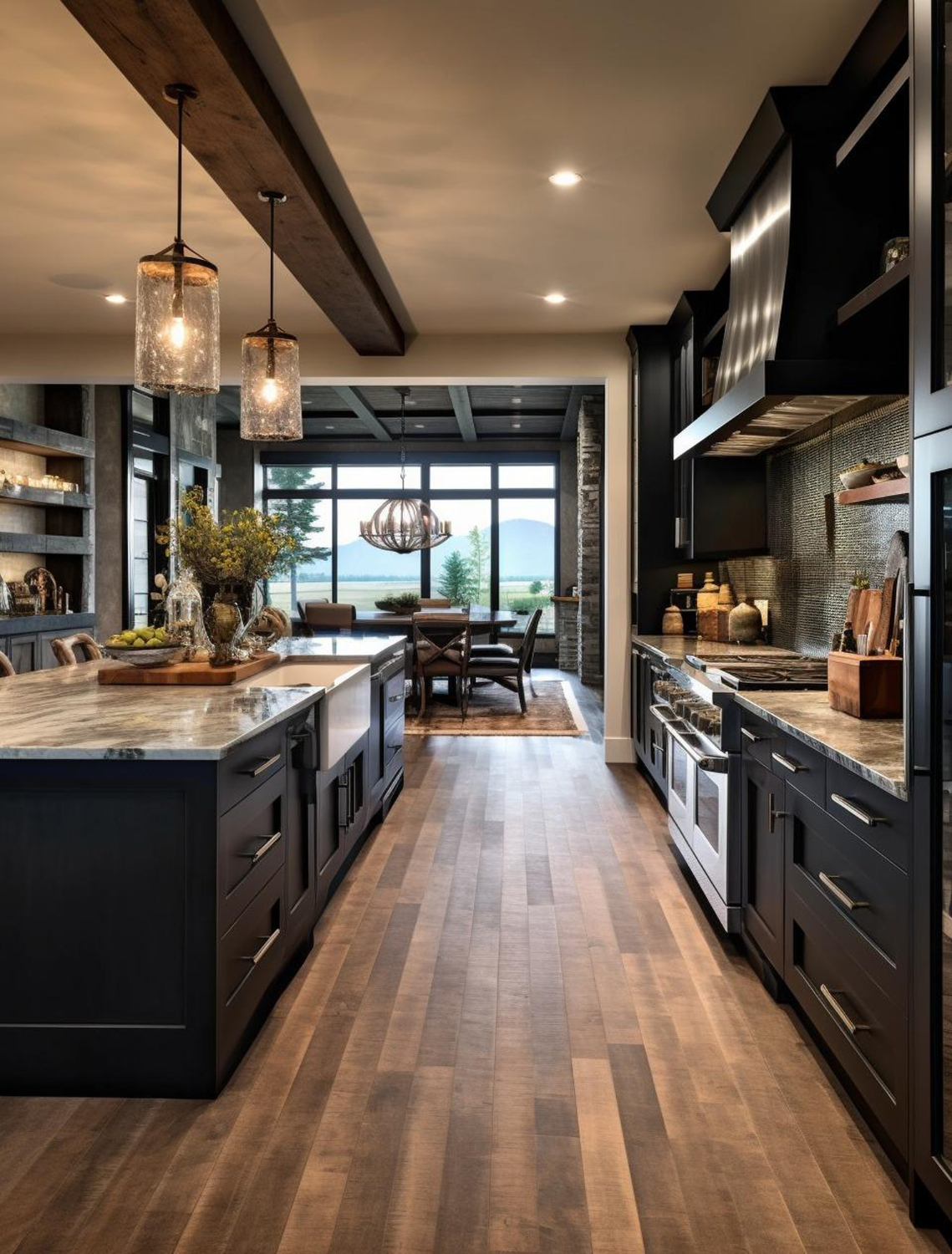
Key Takeaways:
- Understanding the long-term environmental and personal benefits of sustainable materials and designs.
- Identifying energy-efficient appliances that contribute to a lower carbon footprint and utility bill.
- Adopting strategies for water conservation and waste reduction during and after the kitchen remodel.
- Appreciating the role of certified green products in achieving an eco-friendly kitchen design.
- The significance of hiring professionals who are experienced in sustainable remodeling practices.
- Keeping pace with cutting-edge trends and innovations in sustainable kitchen design.
Why Choose a Sustainable Kitchen Remodel?
Embracing sustainability within the kitchen goes beyond making a statement; it serves as a testament to the homeowner’s commitment to an eco-conscious lifestyle. Eco-conscious homeowners are now deeply considering their environmental impact, seeking innovative, sustainable solutions that efficiently manage waste, utilize renewable resources, and create healthier living environments. Energy-efficient designs are more than mere features—they’re an investment in the home and the future, offering the potential for utility savings and increased property values. Time and again, homes with sustainable features tend to attract buyers who are conscious of their environmental footprint, thereby supporting higher resale values.
Eco-Friendly Materials: What Are Your Options?
A critical question to ponder during a kitchen remodel Tacoma is “How will it look?” and, more importantly, “How will it affect the environment?” Environmental conscientiousness within remodeling is reflected vividly in the choice of materials. Within this sustainability framework, bamboo stands tall as a versatile option. Its rapid growth cycle and robust durability make it an excellent candidate for eco-conscious homeowners. Why settle for the traditional when recycled glass countertops and quartz offer an equally striking and sustainable alternative to conventional countertop materials? This transformation extends not just to visible surfaces but to all aspects of kitchen design. Utilizing low-VOC paints and finishes is central to fostering improved air quality. These advances led to creating a kitchen environment that became a testament to responsible living and a stand against the compromise of our environmental health.
Choosing Energy-Efficient Appliances
It is not merely about selecting appliances that match your aesthetic but ensuring they serve a broader environmental purpose. The ENERGY STAR label acts as a beacon of efficiency in a move towards responsible consumption. Looking for this label should be a pivotal step in appliance selection, indicative of compliance with rigorous criteria laid out by the U.S. Environmental Protection Agency. Enlightening homeowners on the benefits of these selections, Energy Star emphasizes that an ENERGY STAR-certified refrigerator conserves energy and actively contributes to cost savings over the product’s lifetime. Similarly, the energy-efficient dishwasher presents an opportunity to save thousands of gallons of water, dovetailing into a narrative of conservation and sustainability that extends well beyond the kitchen.
Water Conservation in Kitchen Design
The thoughtful conservation of water manifests in carefully selecting kitchen elements. A kitchen with sustainability in mind features taps intended to reduce water flow without compromising functionality, and dishwashers boast water-efficiency ratings that eclipse standard models. These conscious decisions resonate with the broader conservation goal and acknowledge the environmental impact of one of our most vital natural resources. Reducing water use through innovative product design helps the planet. Still, it also allows the homeowner to crystallize through lower water bills and a sense of personal responsibility for our shared environment.
Waste Reduction Strategies During and After Remodel
The act of remodeling itself often generates considerable waste, a certainty that sustainable practices seek to mitigate. Recycling old appliances and repurposing materials becomes crucial in this phase, as a commitment to reusing and reducing waste. In the aftermath of the remodel, incorporating in-built features like composting systems heralds a new way of thinking about kitchen waste. Composting organically disposed matter enriches soil and reduces the environmental footprint associated with waste disposal. Successful sustainable design moves beyond the aesthetic—it is equally about creating a space conducive to long-term environmental stewardship.
Understanding Green Certifications and Their Impact
Green certifications provide a lens through which consumers can view their prospective purchases. These certifications, emblematic of adherence to environmental standards, assure the homeowner that they are partaking in a global movement towards sustainability. For instance, LEED certification represents a building’s energy-efficient design and reduced carbon emissions. Similarly, the FSC label on wood products guarantees that the material comes from responsibly managed forests, promoting sustainable practices in the timber industry. By opting for certified products, you influence the market towards greener practices and ensure that your kitchen remodel aligns with an enhanced standard of eco-responsibility.
Hiring Professionals for an Eco-Friendly Renovation
The dream of a sustainable kitchen becomes a reality when stewarded by the right team of professionals. Engaging contractors and designers who are well-versed in environmentally conscious renovation practices is essential. Their prowess in navigating the complex landscape of sustainable materials and technologies can distinguish between an average remodel and an exemplary green living space. They bring skills to the table and an ethos aligned with sustainability goals, ensuring that your remodel not only preserves the environment but also provides practical, ecological benefits to your daily life.
Trends and Innovations in Sustainable Kitchen Design
The evolution of kitchen design continues to absorb the latest sustainable trends, propelling homeowners into a future where efficiency and aesthetics are united. Innovations in intelligent technology allow for sophisticated management of energy consumption, from appliances that adjust their activity to peak usage times to systems that provide real-time feedback on energy use. Furthermore, on-site gardens or cutting-edge hydroponic systems cater to the burgeoning interest in food sustainability, adding a fresh, verdant aspect to the kitchen’s appeal. As highlighted by Consumer Reports, these “smart” choices enrich the kitchen’s functionality while supporting an overarching conservation strategy.
